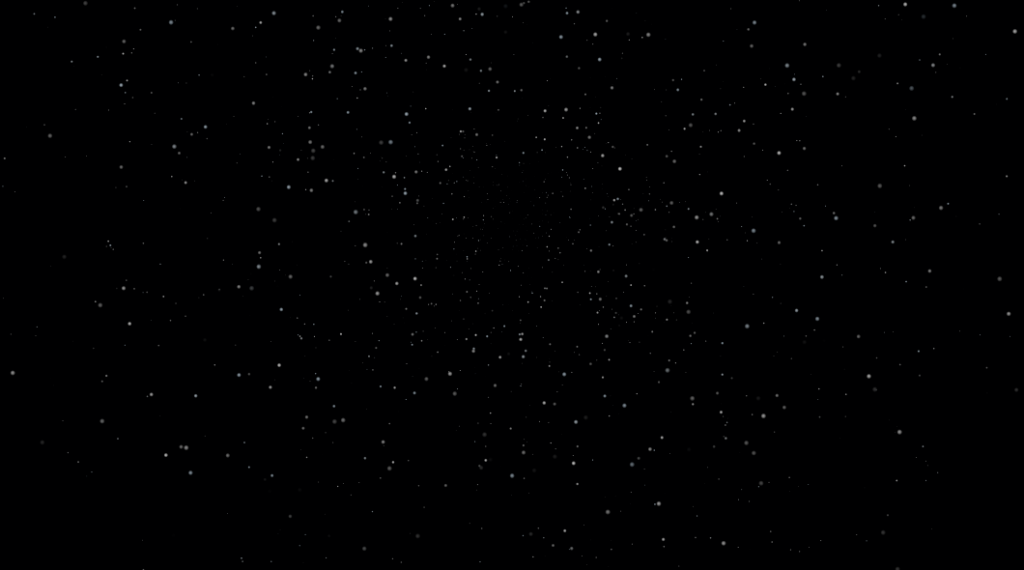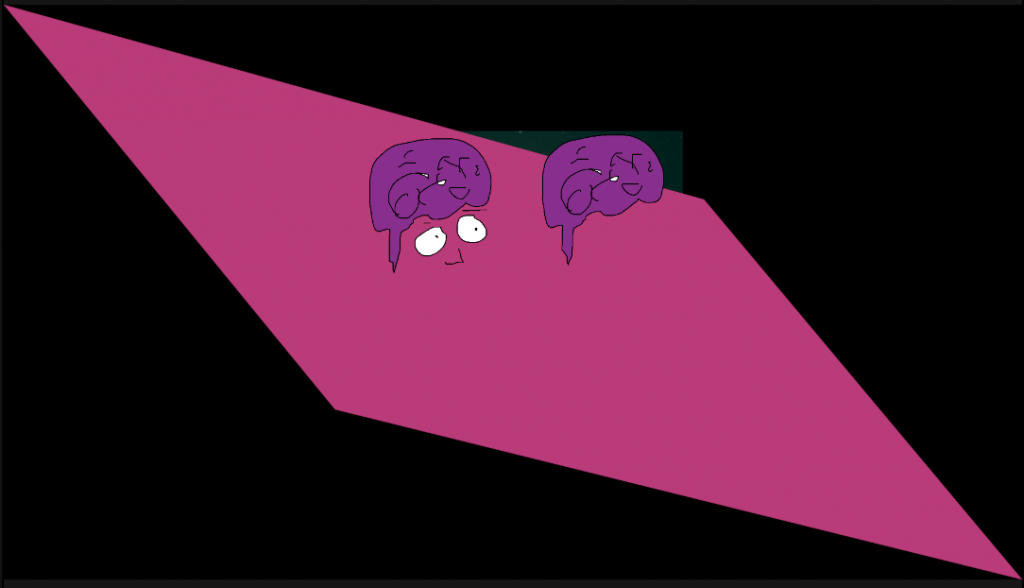I had a vague idea for a passive visualization program that was quirky and surreal and I wanted to test the hypothesis that I can bring people along in a strem of consciousness that wasn’t well-formed.
I decided to:
- Sit down and write something fun in a stream of conscious manner.
- Edit it lightly.
- Create it.
- Don’t worry about “what it’s all about”.
If I showed it to people and they were into it without me having done the deep consideration of elements and meaning, then perhaps I could save a lot of time when writing future programs.
Spoiler: Nope.
The Program
Before I get into the results and lessons learned, here’s a quick rundown of what happens in the 10 minute program.
You see some stars and some calming music vaguely reminiscent of the beginning of Star Trek. A narrator says “This is how we relax in the future”:

There’s some explanation of how it works. Something about you having two brains and looking at one brain with the other brain:

A panda with one large paw and one small paw helps out:

Then there’s something about eating cake, a sidewalk, having big feet, walking on cabbages, being an astronaut, space potatoes, more cabbages, a ringing phone, your ear growing bigger than your head, etc.
The connections between ideas is loose at best but it’s tied together with consistent calming sounds and a mellow-voiced narrator who keeps telling you “this is how we relax in the future”.
Results of Testing
People were lukewarm on it but felt there was promise. Mostly they were trying to figure it out and assigning meaning (which, by design, it was bereft of).
What’s The Story?
People are forever trying to make sense of their world by assigning cause and effect, writing stories that tie things together, and longing for predictability and continuity. But there’s a threshold (mostly unconscious) of “trying to figure stuff out”.
Different people have different thresholds of course. Based on the feedback we received for the Curious Dinners, some people’s experience was harder and less fun because they were trying to make sense of a plot that didn’t really exist. They were trying to hook things together that weren’t made to be hooked together. Other people just took each moment as it was and find it unpleasant to not really know how it all fit together.
That’s not to say that one group failed and one got it right. (If there was a failure, it was on us the hosts for not explaining it was not supposed to make sense). Sometimes you benefit from trying to put it all together and other times it’s just a bunch of stuff that happens and looking for the story is an impossible and frustrating task.
With Futuro Relaxo, there was a point of “weird overwhelm”. Maybe you see space and you think “ok, we’re in space”. Then you see the panda and you think “ok, weird. but panda in space. I can handle that” Then there’s some cake and a sidewalk and space potatoes… and people start dropping like flies.
They just check out and suddenly instead of being IN the program they are looking at it from an outsider. They’ve emotionally gone to the sidelines to sit on the bench and watch the game instead of play it. And it’s really really hard to get them back. We’ve all been there: it’s that moment you are watching a tv show and say “god this is stupid”. Then you turn it off.
Some things I might have done to keep them on the inside instead of going to the outside:
- (The obvious one) Actually have a plot, arc, or connect the dots better.
- Create more breaks for them to digest the weirdness. It was a firehose of random stuff. If I had given more time between changes, their minds would start writing the story for me, perhaps. It’s amazing the lengths people will go to to make sense of things.
- Perhaps I could use a “straight man” who is going through the experience and also doesn’t understand it. At this point they have a story they can understand – the story of the straight man.
The program was to be surreal. But surreality isn’t just “a bunch of random stuff that looks like reality”. It’s a transposition of reality done in a consistent way. Maybe it’s up to the artist to communicate the transpose function to the unconscious mind of the guest. That way when the guest becomes lost in the program their unconscious mind can map it back to reality and see that things do make sense.
Other Lessons Learned
More artwork and more animations = a lot more work.
The part that worked the best I think was the sound. This could be a cognitive bias because I spent so much time getting the sound they way I wanted it. But it could also work so well because I really chased down the soul of the sound I wanted and worked really hard to get the “right” one.
The line “This is how we relax in the future” was well-received and I think the idea has promise.
I didn’t really think throwing a bunch of stuff together like this would work well, but I’m glad I tried it. It made me feel good that the time I’ve been spending on thinking things through for other programs has paid off. (Of course I don’t know how much thinking it through is required, so I could be overdoing it. But at least I know the lower bound is not zero).
What’s Next?
I’d like to find the soul of this idea and see if I can communicate it more clearly. Developing this program further is not currently a high priority because it’s a passive program and I prefer The Eureka Room to be a more interactive, interpersonal place.